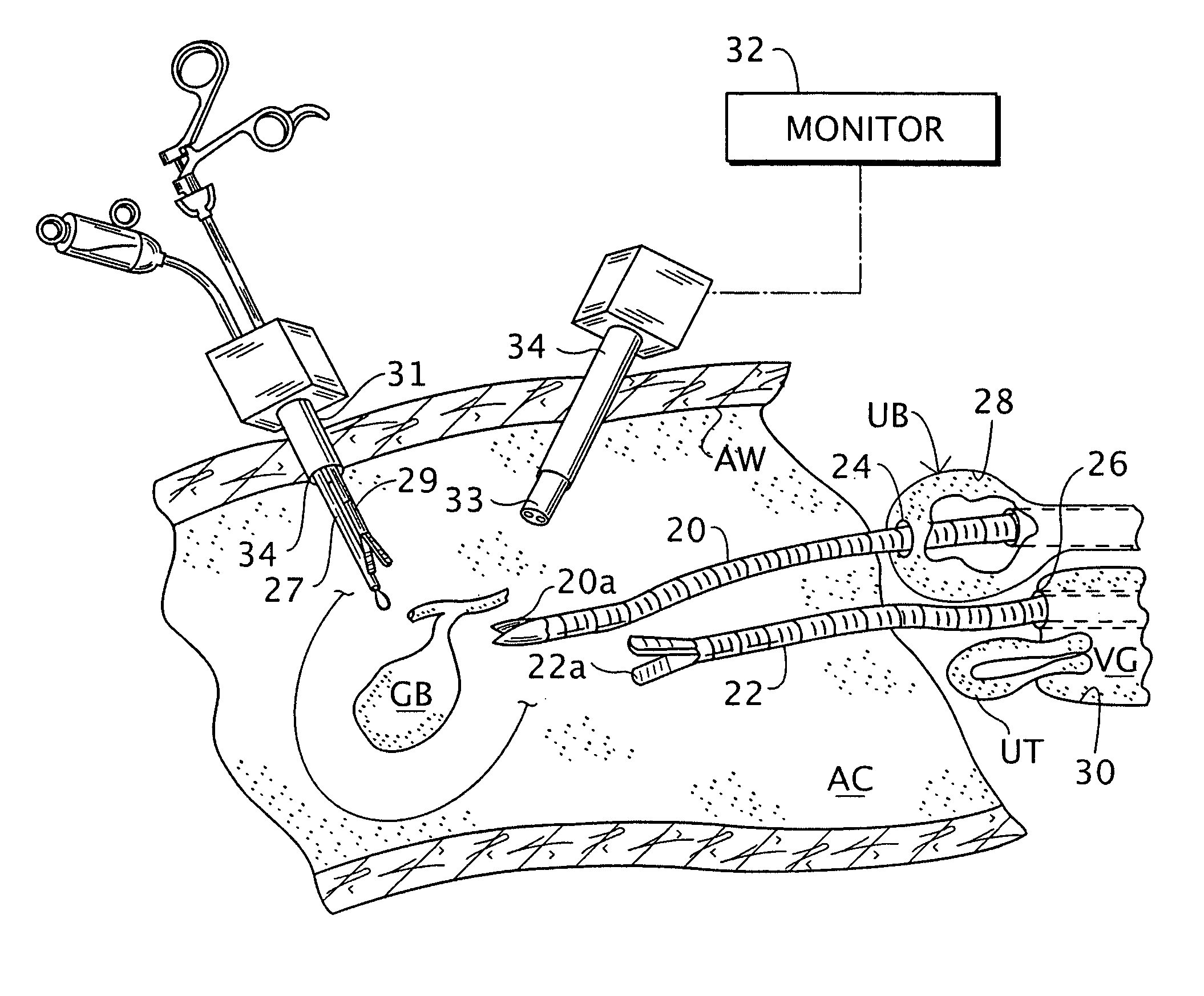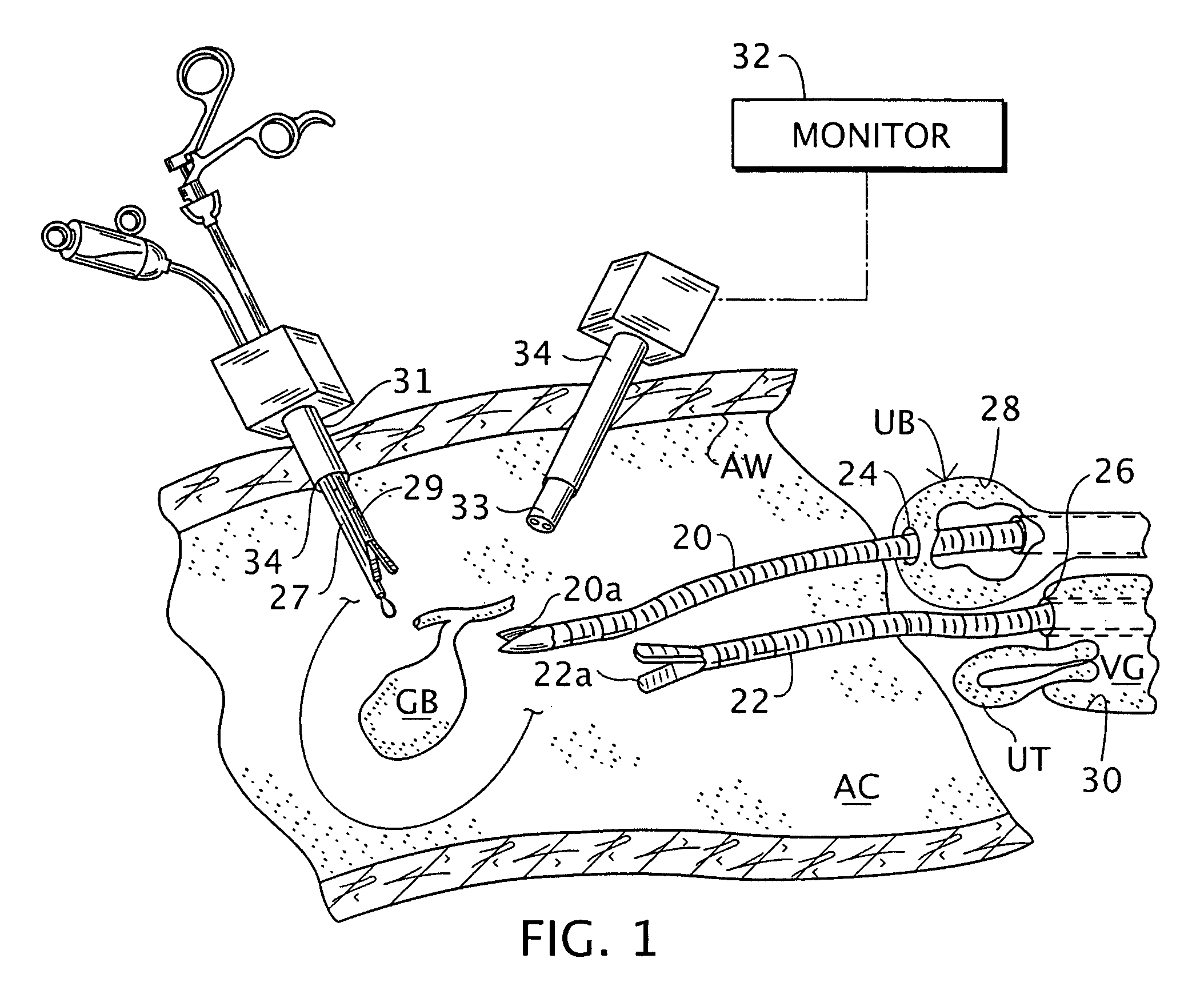Intra-abdominal medical procedures and device
a medical device and intra-abdominal technology, applied in the field of medical procedures, can solve the problems of difficult to find space along the selected pathway, difficulty in forming a fluid tight closure of the perforation, and difficulty in forming a fluid tight closure of the perforation, and achieve the effect of facilitating or enabling the removal of large tissue samples or objects
- Summary
- Abstract
- Description
- Claims
- Application Information
AI Technical Summary
Benefits of technology
Problems solved by technology
Method used
Image
Examples
Embodiment Construction
[0040]As depicted in FIG. 1, a surgical operation via natural body cavity as described in U.S. Pat. Nos. 5,297,536 and 5,458,131 may be carried out in conjunction with more conventional laparoscopic access procedures. For example, a surgical operation in the abdominal cavity AC such as removal of a gall bladder GB may be implemented via simultaneous access to the abdominal cavity via the urinary bladder UB and the vagina VG, as well as via an instrument inserted through the abdominal wall AW. (The uterus is represented at UT.)
[0041]FIG. 1 shows distal ends portions of two surgical instruments 20 and 22 such as a forceps and an ablation tool entering the abdominal cavity AC via openings 24 and 26 artificially formed in walls 28 and 30 of the bladder UB and the vagina VG via, for example, an incising instrument as described in U.S. Pat. Nos. 5,297,536 and 5,458,131. Instruments 20 and 22 have distal ends provided with operative tips 20a and 22a that are controlled from outside the pat...
PUM
 Login to View More
Login to View More Abstract
Description
Claims
Application Information
 Login to View More
Login to View More - R&D
- Intellectual Property
- Life Sciences
- Materials
- Tech Scout
- Unparalleled Data Quality
- Higher Quality Content
- 60% Fewer Hallucinations
Browse by: Latest US Patents, China's latest patents, Technical Efficacy Thesaurus, Application Domain, Technology Topic, Popular Technical Reports.
© 2025 PatSnap. All rights reserved.Legal|Privacy policy|Modern Slavery Act Transparency Statement|Sitemap|About US| Contact US: help@patsnap.com



